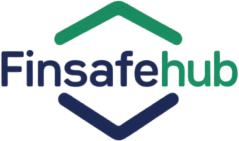
Beginner’s Guide to Financial Literacy: Money Basics 101
Welcome to the first step on a journey that will reshape your relationship with money. In its simplest form, financial literacy is the understanding of basic financial principles, such as budgeting, saving, and investing, that enable you to make informed decisions about money.
For too long, the world of finance has felt intimidating and inaccessible to the average person. This guide is here to change that.
Financial literacy helps you avoid common mistakes such as overspending, accumulating debt, and missing savings opportunities.
Let’s unpack the basics to help you move from being a passive passenger in your financial life to navigating a clear path to long-term stability.
Budgeting: The Foundation of Financial Literacy
If financial literacy is a house you're building, then budgeting is the solid foundation upon which everything else rests. At its core, budgeting is the process of planning your spending to make sure you don’t overspend. It's about consciously telling your money where to go, rather than wondering where it went.
This isn't about restriction; it's about intentionality.
For beginners, the key is to keep it simple. Start by tracking your income (what you earn) and your expenses (what you spend) for a month. You might be surprised by what you find!
Once you have a clear picture, use the 50/30/20 rule. This strategy helps you divide your after-tax income into three simple categories:
- 50% for Needs: This includes your essential living expenses, such as rent or mortgage, utilities, groceries, and transportation.
- 30% for Wants: This is for your discretionary spending – the things that make life enjoyable, like dining out, hobbies, and entertainment.
- 20% for Savings & Debt Repayment: This portion builds your financial future, whether that's saving for a down payment or paying off debt.
To make this even easier, consider using technology to your advantage. Apps like Mint and YNAB (You Need A Budget) help you track expenses and income, helping you stick to your budget more effectively.
These tools can link to your bank accounts and categorize your spending automatically, giving you a real-time look at your financial health.
Saving: Why and How to Save Money
Once you have a handle on your budget, you can start to powerfully utilize that 20% dedicated to your financial goals.This brings us to saving.
Saving is the process of putting aside a portion of your income for future needs. It helps you prepare for emergencies and achieve long-term goals, such as buying a home.
Saving is your first line of defense against financial stress and your primary tool for building the life you want.
The most crucial savings goal for any beginner is building an emergency fund. This is a pool of money set aside to cover unexpected expenses, like a car repair or a medical bill, without having to go into debt.
A good target for an emergency fund is three to six months' worth of essential living expenses.
So, how do you get started, especially if you feel like you don't have much to spare?
- Start Small: Even saving $25 a week adds up to $1,300 in a year. The key is to build the habit.
- Automate Your Savings: Set up an automatic transfer from your checking account to your savings account each payday. This "pay yourself first" approach ensures that you prioritize saving.
- Choose the Right Account: Don't just let your savings sit in a standard, low-interest account. Opening a high-yield savings account can help you earn more interest on your savings while still keeping your money accessible. Online banks typically offer these accounts at better returns.
Debt: Understanding and Managing It
Debt can often feel like a four-letter word, but it's a nuanced part of most financial lives. Debt is money you owe to someone, such as a credit card company or a bank. The key to financial well-being is understanding how to use debt wisely and manage it effectively. A crucial first step is to differentiate between "good debt" and "bad debt."
- Good Debt: This refers to debt used to purchase an asset that will increase in value or enhance your quality of life, such as a mortgage for a home or a student loan for education.
- Bad Debt: This refers to high-interest debt used for consumables, such as credit card debt resulting from overspending. This type of debt can quickly spiral out of control and hinder your financial progress.
If you have existing debt, creating a plan to pay it off is a critical step. A popular and effective strategy for beginners is the avalanche method.
With this approach, you make the minimum payments on all your debts, but you put any extra money towards the debt with the highest interest rate first.
Once that's paid off, you "avalanche" that payment amount onto the next-highest interest debt.
The avalanche method is a popular debt repayment strategy that focuses on paying off high-interest debt first, saving money in the long run.
To avoid accumulating unnecessary debt in the future, always refer back to your budget. If a purchase doesn't align with your "wants" or "needs," pause and consider whether it's worth taking on debt for.
Investing: Growing Your Money
Saving is about security; investing is about growth. While saving protects your money, investing is what will truly build your wealth over time. Investing allows your money to grow over time by purchasing assets such as stocks or bonds.
The goal is for your money to work for you, generating additional income through compound interest and growth.
For beginners, investing in low-cost index funds is a good way to get started. An index fund is a type of mutual fund that holds a diversified portfolio of stocks from a specific market index, such as the S&P 500.
This provides instant diversification and is a much lower-risk approach than trying to pick individual stocks.
In today's digital age, you don't need a lot of money to start. Platforms like Robinhood or Acorns make it easy to start investing with small amounts of cash and minimal risk.
These platforms are designed for beginners and allow you to invest in a user-friendly way, often with just a few dollars. The most important thing to remember with investing is that it's a long-term game. The power of compounding works best over many years, so the sooner you start, the better.
Setting Financial Goals
All of this financial knowledge is most powerful when it's directed towards something meaningful to you. Setting monetary goals helps you stay motivated and focused. These goals can be broken down into two categories:
- Short-Term Goals: These are things you want to achieve in the next one to three years. For instance, a short-term goal might be to save $500 in six months for an emergency fund.
- Long-Term Goals: These are for the future, five years or more. A long-term goal might be saving $50,000 for retirement.
To make these goals more than just wishes, use the SMART framework. SMART goals are specific, measurable, achievable, relevant, and time-bound.
For example, instead of saying "I want to save more money," a SMART goal would be: " I will save $200 each month for the next 6 months to build my emergency fund."
This goal is specific ($200 per month), measurable ($1,200 total), achievable (based on your budget), relevant (building your emergency fund), and time-bound (within 6 months).
Global Financial Systems: What You Should Know
A basic understanding of global finance is beneficial.
One of the most practical aspects for a beginner to grasp is currency exchange rates. These rates determine the value of your money in another country. If you’re traveling or making international purchases, understanding exchange rates can help you save money.
A stronger home currency means your money goes further abroad, while a weaker currency means it will cost you more.
It’s also important to recognize that different countries have different financial systems. The way you bank, take out loans, and build credit can vary significantly.
For instance, in the U.S., credit scores are essential for securing loans; however, in some countries, the credit system operates differently, relying more on direct relationships with banks or other forms of collateral. Being aware of these differences is crucial if you plan to live, work, or travel extensively abroad.
Start Today
The journey to financial literacy is a marathon, not a sprint. Now that you know the basics of budgeting, saving, and investing, it’s time to start applying these concepts to your life. Remember, even small steps can lead to big results over time.
Don't let the fear of not knowing everything stop you from taking the first step. Your journey begins with a single action. Today, you can:
- Track your expenses for one week.
- Open a high-yield savings account.
- Define one SMART financial goal.
Continue to be curious and proactive. Explore additional resources, such as online courses or financial blogs, to continue learning and expanding your financial knowledge.
You now have the foundational knowledge to take control of your finances. The future is in your hands. Go out and build the one you deserve.




